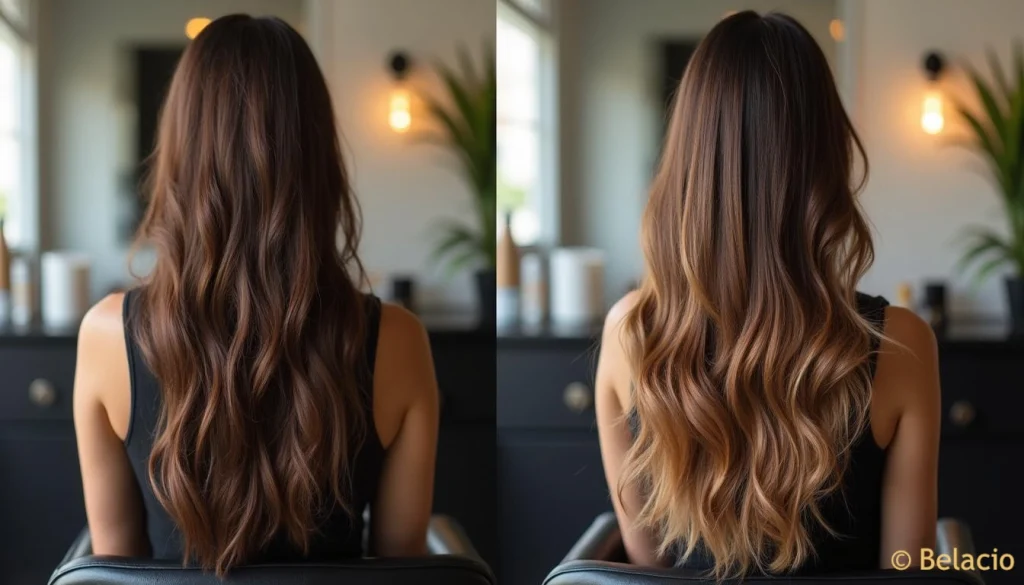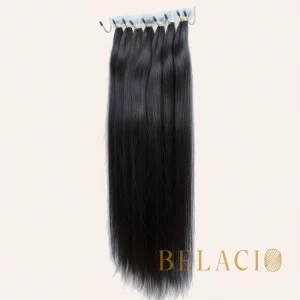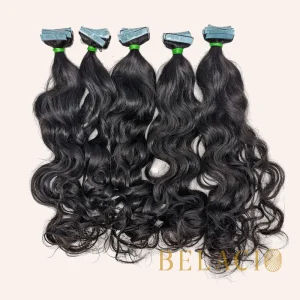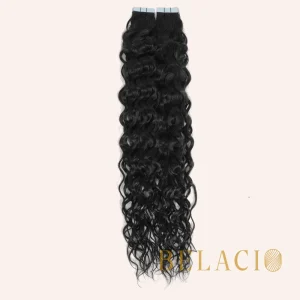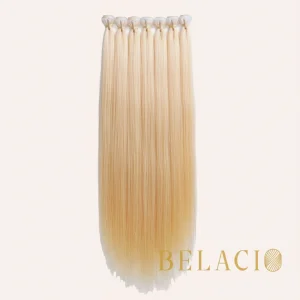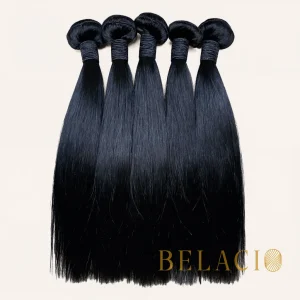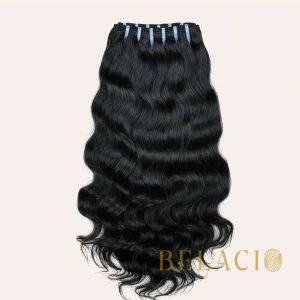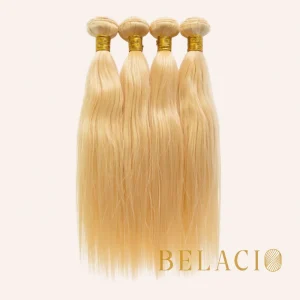After working with hundreds of clients in Puerto Rico’s unique tropical climate, local salon professionals have identified patterns in the most common extension mistakes that lead to damage, disappointment, and costly corrections. While our complete guide to human hair extensions covers the fundamentals, today we’re diving into the specific mistakes Puerto Rican salons see daily—and more importantly, how to prevent them.
The data reveals concerning trends: approximately 8% of reported hair and scalp damage cases are linked to improper hair extension application, with tropical climate factors significantly increasing these risks. From San Juan’s high-end salons to Arecibo’s neighborhood stylists, professionals report seeing the same preventable problems week after week.
Key Takeaways
- Installation mistakes account for the majority of extension problems Puerto Rico salons encounter daily
• Tropical climate challenges create unique care issues most general guides completely overlook
• Product quality problems are easily preventable with proper education and sourcing knowledge
• Maintenance errors cause 80% of premature extension damage in Puerto Rico’s humid environment
• Professional removal by certified technicians prevents costly natural hair repair treatments
• Belacio’s prevention-focused approach eliminates these common costly mistakes before they happen
Top 5 Installation Mistakes Puerto Rican Women Make
Installation errors top the list of problems local salons encounter, with improper techniques causing both immediate discomfort and long-term damage. Puerto Rico’s diverse hair textures—from naturally straight to tightly coiled—require specialized approaches that many clients attempt at home or receive from inexperienced stylists.
1. Incorrect Sectioning and Placement
The most frequent mistake involves uneven sectioning during sew-in installations (extensiones cosidas). Clients often request extensions too close to the hairline or with sections that are too large, creating visible tracks and unnatural bulkiness. Proper sectioning should leave at least 1 inch from the hairline with uniform sections no wider than the extension weft hair.
Local Impact: San Juan salon owner Maria Rodriguez reports, “We see at least 3 clients weekly with visible tracks from poor sectioning. In Puerto Rico’s heat, when women put their hair up, these mistakes become obvious immediately.”
2. Excessive Tension During Application
Over-tight installations plague Puerto Rico’s salon correction appointments. The desire for long-lasting hold often leads to dangerous tension levels, particularly with human tape in extensions (extensiones con tape) and sew-ins. This mistake is especially problematic for clients with fine hair—common among Puerto Rico’s mixed heritage population.
Consequences include:
- Immediate scalp pain and headaches
- Traction alopecia around temples and edges
- Premature extension slippage from scalp stress
- Natural hair breakage at attachment points
3. Wrong Extension Type for Hair Texture
Puerto Rico’s genetic diversity creates unique matching challenges. Many clients choose extensions based on online photos rather than their actual hair texture, leading to obvious mismatches. Afro-Puerto Rican clients often select straight extensions that look unnatural with their leave-out, while clients with fine hair choose heavy weft methods that cause damage.
Professional Tip: Always match texture first, color second. Body wave extensions work better in Puerto Rico’s humidity than bone-straight options for most hair types.
4. Inadequate Hair Preparation
Rushing through hair preparation creates installation problems that emerge within days. Proper preparation includes deep cleansing, protein treatments for damaged hair, and scalp health assessment—steps often skipped in DIY installations or budget salons.
5. Using Incompatible Products During Installation
The wrong products during installation set up future problems. Oil-based leave-in treatments before tape-in installation cause slippage, while protein treatments immediately before chemical bonds can create brittleness. Puerto Rico’s humid climate amplifies these product interaction issues.
| Mistake Type | Immediate Result | Long-term Consequence | Prevention Method |
| Poor sectioning | Visible tracks | Scalp irritation | Professional mapping |
| Excessive tension | Pain/discomfort | Traction alopecia | Tension monitoring |
| Wrong texture match | Unnatural appearance | Styling limitations | Texture consultation |
| Inadequate prep | Slippage/slipping | Installation failure | Thorough preparation |
| Wrong products | Immediate problems | Extension damage | Product compatibility check |
Climate-Related Care Mistakes in Tropical Conditions
Puerto Rico’s tropical climate creates extension care challenges that mainland guides don’t address. Year-round humidity averaging 70-80%, combined with frequent rain and ocean exposure, demands specialized care approaches that many clients learn about only after experiencing problems.
Humidity Management Failures
The biggest climate-related mistake involves fighting humidity instead of working with it. Clients often over-use heat styling tools to achieve straight looks that instantly frizz in Puerto Rico’s moisture-rich air. This creates a damaging cycle: heat damage makes extensions more porous, leading to more frizz, requiring more heat.
Smart approach: Embrace wave patterns that complement humidity. Body wave and curly extensions (extensiones onduladas) maintain their shape better in tropical conditions while looking naturally textured.
Inadequate Drying After Exposure
Puerto Rico’s beach culture means frequent saltwater and chlorine exposure, but many clients skip proper rinsing and drying protocols. Wet extensions left bundled under scarves or wrapped too tightly create perfect conditions for mold, mildew, and bacterial growth.
Professional Protocol:
- Rinse immediately with fresh water after beach/pool
- Gently squeeze (never wring) excess moisture
- Apply leave-in conditioner to damp extensions
- Air dry completely before bundling or styling
Sun Protection Neglect
Caribbean sun intensity (UV index often 10+) rapidly degrades extension quality, especially color-treated hair popular for that sun-kissed look (look bronceado). Clients often protect their skin but forget about hair protection, leading to dryness, color fading, and cuticle damage.
| Climate Challenge | Common Mistake | Proper Approach |
| High humidity | Fighting with heat tools | Embrace natural texture |
| Frequent water exposure | Incomplete drying | Thorough rinse and dry protocol |
| Intense UV radiation | No protection | UV-protective products and coverage |
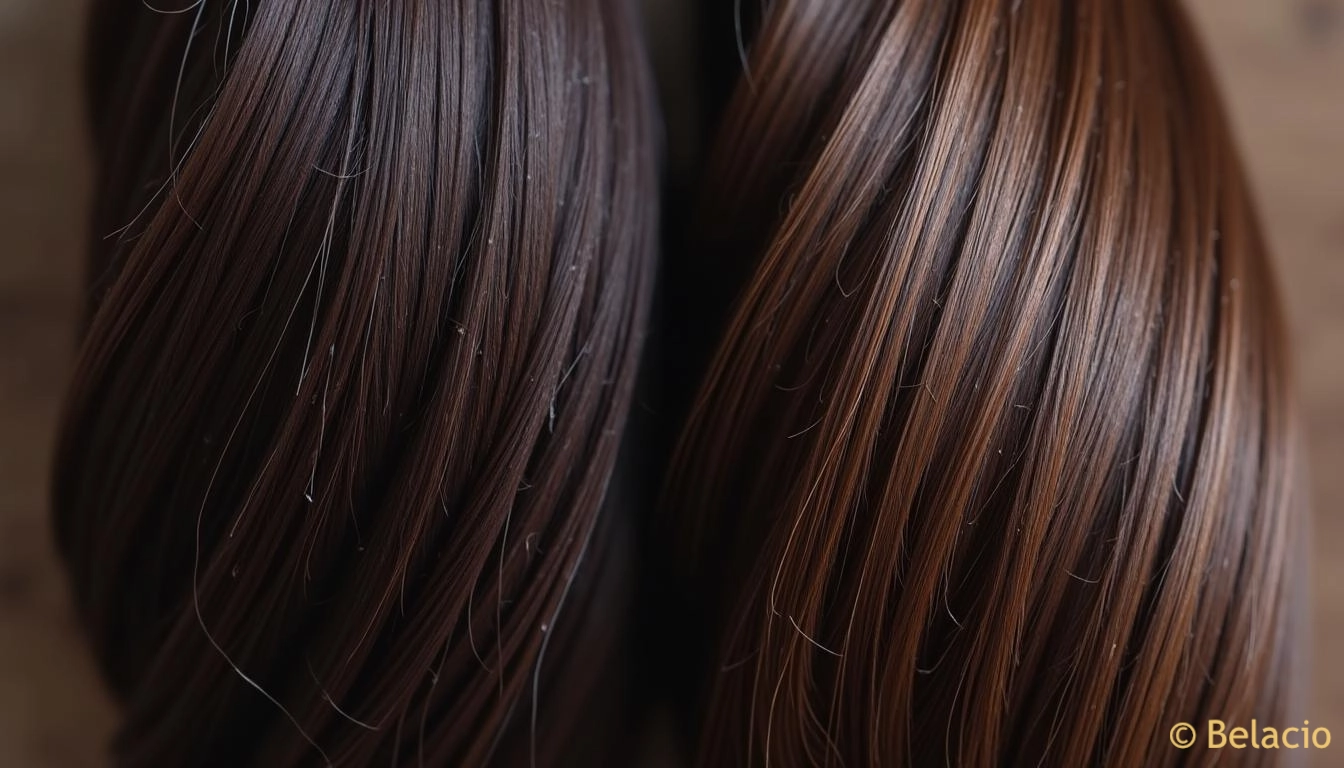
Product Quality Issues: How to Spot Bad Extensions
Product quality problems plague Puerto Rico’s extension market, with imported hair varying dramatically in grade and processing. Island logistics can make returns difficult, making initial quality assessment crucial for avoiding costly mistakes.
Recognizing Poor Quality Signs
Visual indicators:
- Uneven coloring throughout the weft
- Tangled or matted sections straight from packaging
- Thin or scraggly ends indicating excessive processing
- Chemical odors suggesting harsh treatment
Texture tests:
- Hair feels brittle or crunchy when dry
- Excessive shedding with gentle handling
- Won’t hold curl or returns to processed texture
- Feels sticky or coated with products
Common Quality Issues in Puerto Rico
Supply chain challenges: Being an island territory, Puerto Rico sometimes receives older inventory or products stored in suboptimal conditions. Heat and humidity during shipping and storage can degrade adhesives and hair quality before purchase.
Counterfeit products: Popular brands face counterfeiting issues in Caribbean markets. Fake “Remy” or “Virgin” hair often uses lower-grade processed hair with misleading packaging.
Quality Verification Steps
- Source verification: Purchase from established Puerto Rico beauty suppliers or verified mainland retailers
- Texture matching: Test against your natural hair texture when possible
- Return policy confirmation: Ensure returns are possible given island shipping logistics
- Professional consultation: Have quality assessed by experienced local stylists
Price reality check: Premium 100g Indian hair bundles in Puerto Rico typically cost $80-120. Significantly lower prices often indicate quality compromises.
Maintenance Mistakes That Damage Natural Hair
Maintenance errors cause the majority of extension-related damage salon professionals see in Puerto Rico. The humid climate demands more frequent care attention, but many clients either over-maintain or under-maintain their extensions, both leading to problems.
Over-Washing in Humid Conditions
Many clients believe Puerto Rico’s humidity requires daily washing, creating a destructive cycle. Frequent washing strips natural oils that extensions can’t replace, leading to dryness, tangling, and matting. The recommended schedule of once weekly becomes even more important in tropical climates.
Proper washing routine:
- Weekly cleansing with sulfate-free shampoo
- Focus shampoo on scalp, let it cleanse extensions as it rinses
- Deep conditioning every other wash
- Cool water rinses to seal cuticles
Incorrect Brushing Techniques
Puerto Rico’s humidity makes hair tangle more easily, leading clients to brush aggressively or with inappropriate tools. Metal brushes and excessive force cause both extension and natural hair damage, particularly at attachment points.
Professional brushing method:
- Start at ends, work upward in sections
- Use wide-tooth comb on wet hair only
- Paddle brush or extension-specific brush for dry hair
- Support weft/attachment point while brushing
Sleeping Without Protection
Many clients underestimate nighttime protection needs in tropical climates. Friction against cotton pillowcases, combined with humidity-related frizz, creates morning tangles that lead to aggressive brushing and damage.
Night protection essentials:
- Satin or silk pillowcases (fundas de seda)
- Loose braids or protective wrapping
- Leave-in protection spray for dry climates
Neglecting Regular Professional Maintenance
Industry standards recommend professional maintenance every 6-8 weeks, but Puerto Rico’s climate may require more frequent check-ins. Salt air, humidity, and active lifestyles can accelerate wear, making 4-6 week intervals more appropriate for some clients.
Maintenance schedule factors:
- Activity level (beach/pool frequency)
- Extension method (tape-ins need more frequent attention)
- Natural hair growth rate
- Climate exposure level
| Maintenance Error | Frequency in PR Salons | Damage Result | Prevention |
| Over-washing | 60% of damage cases | Dryness, brittleness | Weekly wash maximum |
| Aggressive brushing | 45% of tangles/matting | Breakage, shedding | Proper technique education |
| No sleep protection | 70% of morning tangles | Friction damage | Satin protection routine |
| Delayed maintenance | 55% of clients | Compound problems | 6-week schedule adherence |
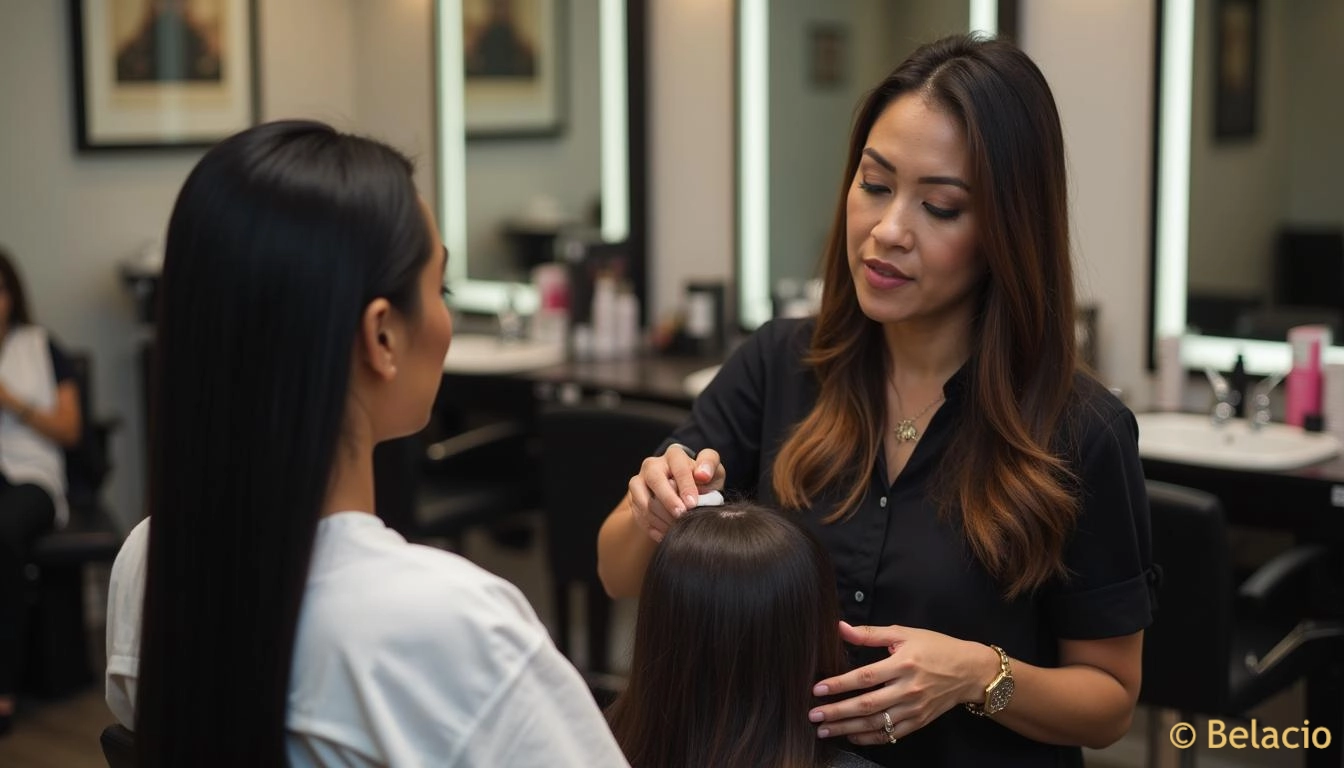
Professional Solutions and Prevention Strategies
Experienced Puerto Rico salon professionals have developed climate-specific strategies that prevent these common mistakes. Their approaches focus on education, proper technique, and realistic expectations for tropical conditions.
Pre-Installation Education
The most successful salon experiences begin with comprehensive consultations addressing Puerto Rico’s unique challenges. Clients learn about realistic expectations, proper care routines, and lifestyle adjustments before installation.
Consultation elements:
- Climate impact discussion
- Lifestyle compatibility assessment
- Texture and color matching
- Care routine education
- Cost-of-ownership explanation
Technique Adaptations for Tropical Climate
Professional installation techniques adapt to humid conditions through modified timing, product selection, and curing processes. For example, tape-in installations may require longer drying periods before first wash due to ambient moisture.
Client Education Programs
Successful Puerto Rico salons implement ongoing education through:
- Post-installation care consultations
- Follow-up maintenance appointments
- Seasonal care adjustments
- Product recommendation updates
- Troubleshooting support
Quality Control Systems
Professional salons establish supplier relationships ensuring consistent quality despite island logistics challenges. This includes:
- Verified supplier partnerships
- Quality testing protocols
- Return/exchange procedures
- Inventory rotation management
How Belacio Prevents These Common Problems
Belacio’s prevention-focused approach addresses every mistake outlined above through comprehensive education, premium sourcing, and ongoing support tailored specifically for Puerto Rico’s climate and lifestyle needs.
Our team has witnessed these costly mistakes too many times to count, which is why we’ve developed systematic prevention protocols that eliminate problems before they occur. For the complete foundation on choosing, installing, and maintaining extensions in Puerto Rico’s unique environment, explore our comprehensive Puerto Rico hair extension resource.
Frequently Asked Questions
What’s the #1 mistake Puerto Rican women make with extensions?
Installation placement too close to the hairline, creating visible tracks in Puerto Rico’s heat when hair is worn up. Professional placement should maintain at least 1 inch from the hairline.
How does humidity affect extension longevity in Puerto Rico?
High humidity (70-80% year-round) increases tangling, frizzing, and requires modified care routines. Extensions typically need more frequent professional maintenance every 4-6 weeks instead of the standard 6-8 weeks.
Can damaged extensions be repaired or must they be replaced?
Minor damage like tangling or dryness can often be repaired with professional deep conditioning treatments. Severe damage from heat, chemical processing, or poor installation typically requires replacement to prevent natural hair damage.
How often should I visit a salon for extension maintenance in Puerto Rico?
Every 6-8 weeks minimum, with some clients needing 4-6 week intervals depending on activity level, exposure to salt air, and extension method. Active beach lifestyles may require more frequent professional attention.
What are the warning signs my extensions are damaging my natural hair?
Persistent scalp pain, excessive hair shedding during removal, visible thinning around attachment points, or difficulty styling your natural hair when extensions are removed. Any of these signs require immediate professional evaluation.

